Toaplan Arcade Collection Vol 1 is, as the name very much suggests, a compilation of games originally published by legendary developer Toaplan and it includes eight of their most beloved shoot ’em ups, ported over by Swedish studio Bitwave AB.
Before we get into the eight shoot ’em ups offered here, it’s worth talking about Toaplan for a moment. Based out of Tokyo, they developed games from 1984 to 1994, putting together an incredible run of games, most of which were vertically-scrolling shoot ’em ups that absolutely redefined the genre and took it from the doldrums of the 1942 and Xevious era and helped it evolve into what was, at the time, the premier arcade genre.
And what’s crazy is that even after the company declared bankruptcy in 1994, their people carried on innovating the genre with them moving on to form or join other developers. Even the great shoot ’em up developer Cave were formed by ex-Toaplan employees.
But onto this compilation. What you get here is a selection of eight games each perfectly emulated while also providing modern quality of life and presentation features. You’ve got backdrops, filters, save states and all of that stuff but also assists such as rewind, slow motion, autofire and the like. Which is good because Toaplan’s games were famously brutal meaning that while hardcore fans would be loving this pack, more casual players might have been traumatised by it all.
The actual selection of games is slightly odd. This is the first of two packs but the games aren’t split between them in any kind of order. Indeed, Toaplan’s first (Tiger Heli) and last (Batsugun) shoot ’em ups are both on this compilation. And, really, the only way to tackle them in this review is to go one-by-one following this pack’s oddly configured main menu order.
Flying Shark (1987)
A straight-forward military shoot ’em up, most of our familiarity with this one came from the exemplary ZX Spectrum home conversion which some have said is actually more fun that the arcade version. While your mileage may vary, what you get here is a hardcore shooter set over a warring world where the battle happens over land and sea.
It’s all pretty standard stuff. You’ve got your main gun, which is upgradable, and a stock of bombs and you’ll need them as this game is pretty savage. Aside from the fact that the enemies are aggressive and they are pretty good at sniping you out of the sky with their fast-moving shots, the visuals are also a little cluttered, making things even harder. But what really lets down the game are the bosses which are not very impressive at all. Also, after the the fifth stage, the game loops back around (albeit with more difficulty) so there’s not really much to see here.
Fire Shark (1989)
Flying Shark’s lesser-known sequel, Fire Shark has a similar land/sea setting as the previous game but makes improvements to the visuals and updates the weapon system to give you more options, while making it all a bit more exciting. However, in terms of how it all plays out, it’s remarkably similar to what came before.
You’ll literally see enemy formation patterns and situations that while give you serious deja-vu. And again, the bosses aren’t all that impressive. But really the main issue is the difficulty which was too much even for the good people of Japan back in ’89 and made the game less popular there. And that’s saying something. Again, instead of the bullet-hell sprays that the genre would eventually adopt, the enemies here fire super-fast bullets right at you which had us questioning if the game was even playable. But, of course, there are experts out there who can probably 1CC the whole thing but normal people can expect to be entirely defeated by Fire Shark‘s masochistic ways. The power-up system also lets the game down a little, requiring you to grab three power-up icons to actually get a weaponry boost while just one bullet can set you back to having to take on the enemy with the basic default weapon.
Tiger Heli (1985)
This compilation steps back a few years with the third game offered and gives us Toaplan’s first shoot ’em up, Tiger Heli. And you can pretty much see the DNA of the Shark games right here with it. With just four stages, more mediocre bosses, a simplified weapon system (albeit one that innovated at the time with its powerful bomb feature) and the same land/sea setting as the other games, it all feels remarkably similar. And the power-up system, that uses weak satellite helis to bolster your attack, is unsatisfying and fragile too which doesn’t make the game all that compelling.
The visuals are a lot more simplistic but everything else was pretty setting the template for Toaplan’s next nine years’ worth of shoot ’em ups. But again, the hardcore difficulty could be off-putting to players not used to being smited out of the sky almost instantly.
Twin Cobra (1987)
Where Fire Shark was the follow-up to Flying Shark, Twin Cobra was the sequel to Tiger Heli and like the Sharks, this game takes the original formula while updating the visuals and beefing up the weapons. There’s definitely a bit more going on here but by the time you play Twin Cobra, at least if following the main menu’s order, you’ll be thinking that you’ve seen a lot of the same thing by this point. The land/sea setting, the enemy types, the unremarkable bosses, the now-a-bit-tiresome difficulty levels. It’ll all start to feel a bit repetitive (it feels like the same enemy battleship shows up in every game multiple times) and so it’s only those fast enemy shots keeping you from getting too disinterested.
Outzone (1990)
Thankfully, 1990’s Outzone finally came along to mix up the formula. Sure, it’s still unbelievably savage but what we have here is a near futuristic setting and now it’s a run-and-gun style game, in the vein of something like Ikari Warriors. After four games that all essentially do the same thing, Outzone‘s different approach is a lot more interesting.
And it’s a great game, possibly the best one on the compilation along with Batsugun. Being on foot means that now the terrain is more of a factor, offering protection and hazards. There are also two types of weapon, one that spread fires directly upwards, which is great for going on the all-out attack, or a directional one that lets you deal with enemies coming at you from the sides or behind. We wish that Bitwave had implemented twin-stick controls for this one though.
The bright and bold visuals also mark a bit of a step up for Toaplan here too.
FixEight (1992)
A spiritual successor to Outzone, this one follows the pattern of this compilation so far by basically taking the core gameplay and a lot of the same enemy patterns as before but then tweaking it all with a slightly different weapon system and bigger, bolder visuals. It’s all pretty good but there were times with this one where it was unbelievably frustrating. The cheap deaths, the unhelpful checkpointing, the way the environment works against you.
You’ve really got to suffer your way through this one and while in many ways it’s an upgrade over Outzone, we didn’t enjoy it as much for some reason.
Batsugun (1993)
Now we’re talking. Batsugun gets a lot of credit in the genre, often being cited as one of the top two shoot ’em ups ever and its DNA can be seen all over the bullet hell sub-genre. Sure, it’s still tougher than a flat-roofed pub full of Bruce Lees but it’s such a spectacle with firepower (yours and the enemies’) splashed all over the screen, big bosses, plenty of colour and it’s a lot of fun.
This also includes the ‘Special’ version which made some player-friendly tweaks to the gameplay (and is presented here as a whole extra game). But if you want to see where all your favourite Cave shooters got their start, Batsugun remains one of the most relevant shoot ’em ups on this compilation.
Dogyuun (1992)
Another futuristic shooter, Dogyuun stands apart from the other games on this pack for a few reason. The visuals are excellent, certainly some of the best graphics in this selection, and there’s a real focus on boss battles here with them clearly taking prominence over the rest of the levels that are shorter than the other games on here. We also very much appreciated that this is the only game that doesn’t downgrade your weaponry when you die – even if that’s because there are no upgrades.
By default your firepower is big, chunky and intimidating. But, that said, so are the bosses. At times this game feels like a boss rush but against some of the nastiest bosses we’ve encountered in a shoot ’em up and so this was the game we struggled with the most (it was also the only one where the trophy for beating it glitched out, so that’s not great). It was only afterwards that we realised we could use the not-at-all-explained ‘Beam’ button to carry player 2 and double up our firepower, which turns a near-impossible game into merely a very, very difficult one. Cool.
So, yeah, your enjoyment of this compilation will come down to how much you can stomach some really aggressive difficulty and a lot of games that offer minor improvements on each other rather than being huge leaps forward. Certainly the games do get better as you go up through the years and these are definitely some of the most important shoot ’em ups so getting them here in one pack is pretty cool.
And while the price of each pack – a significant £30 each – is a bit much, it’s at least a lot better than the recent Irem compilations which give you three games for half that price. Could you have just made one bigger pack for that price though? Yes, probably. These are just ROMs after all and having a big, generous compilation of all of Toaplan’s shooters would have been a good deal.
We’d definitely have liked to have seen a few museum features too. You just get the games here which isn’t really all that tempting when you can easily run them all on MAME and on various handhelds. Tell us more about the games, reveal all those weird hidden secrets.
But overall, we need to stop criticising because what this pack does do is group together eight of the most important shoot ’em ups from retro history and while we found it very difficult most of the time, that’s the authentic Toaplan experience and if you’re a hardcore fan of that company or the genre in general, this compilation is as good as it gets.
+ A good range of much-needed assist options
- The level of difficulty is a little sadistic
- Not sure why they couldn't combine both packs into one
- Lacks any kind of museum features
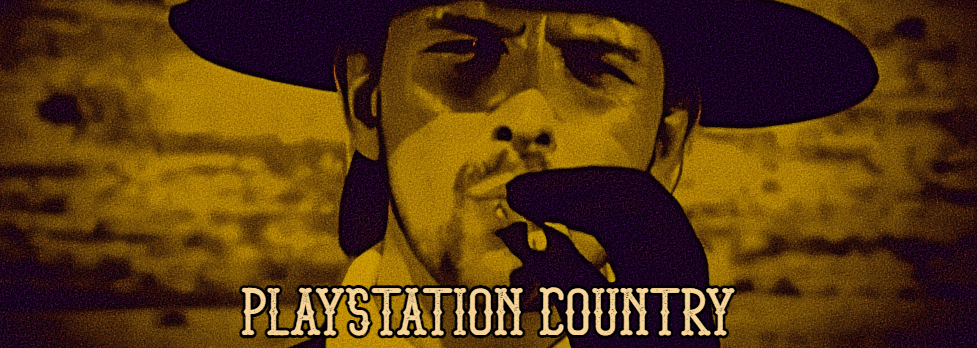

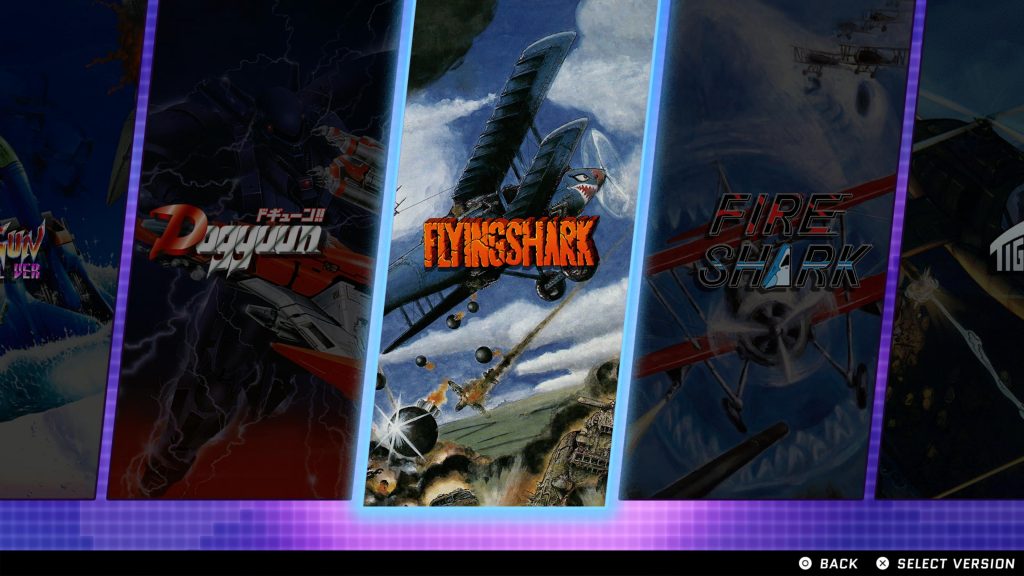
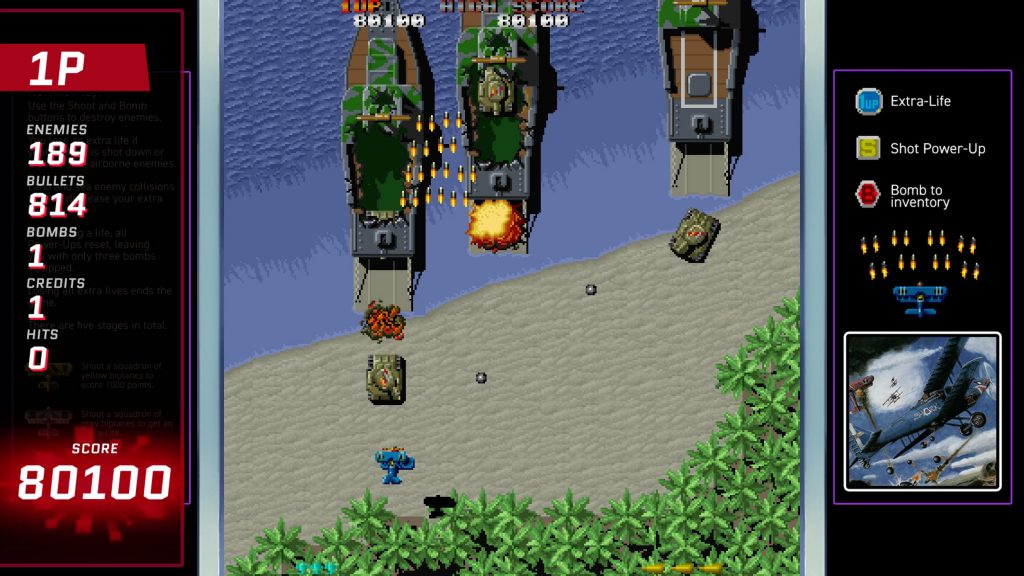
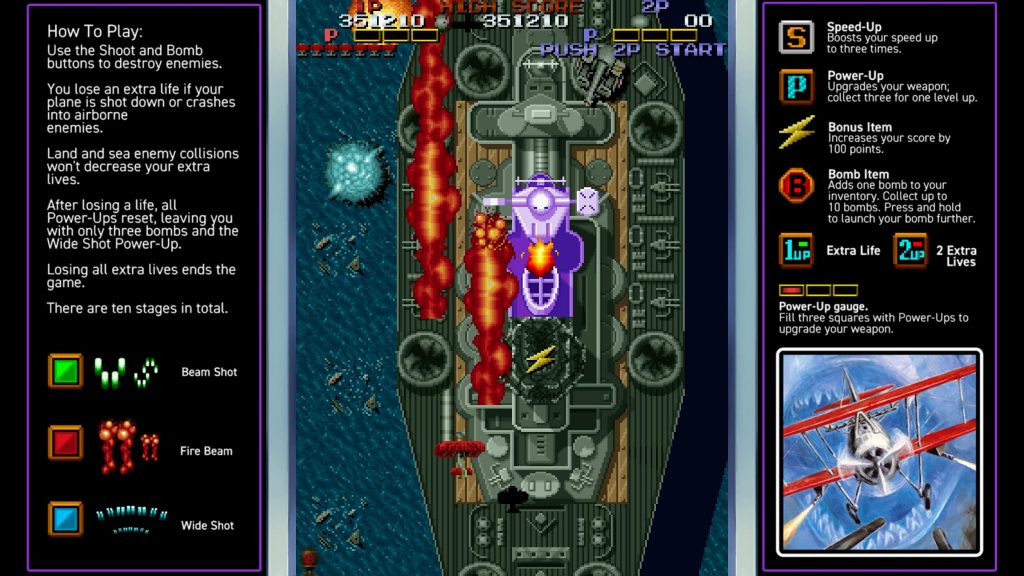
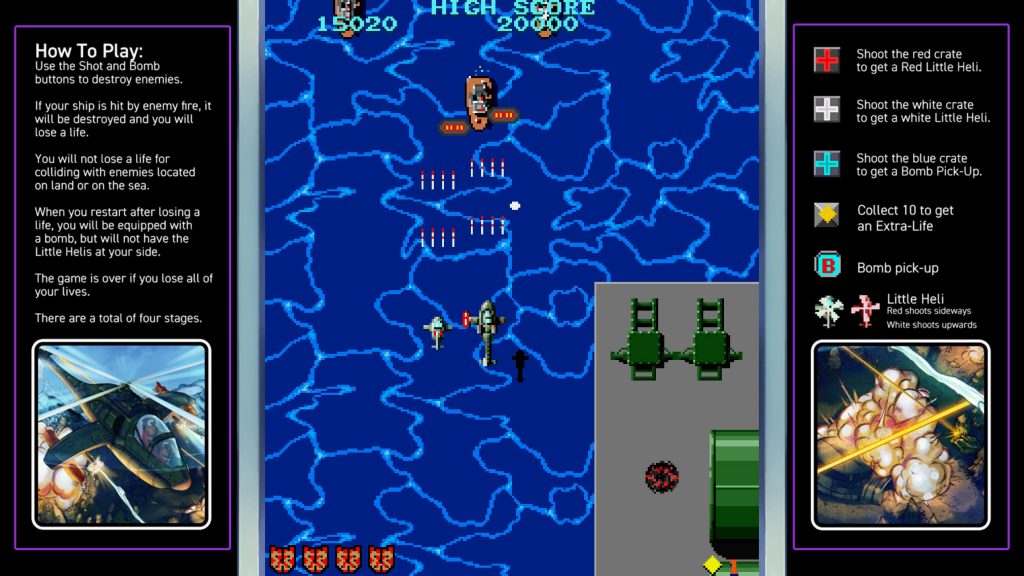
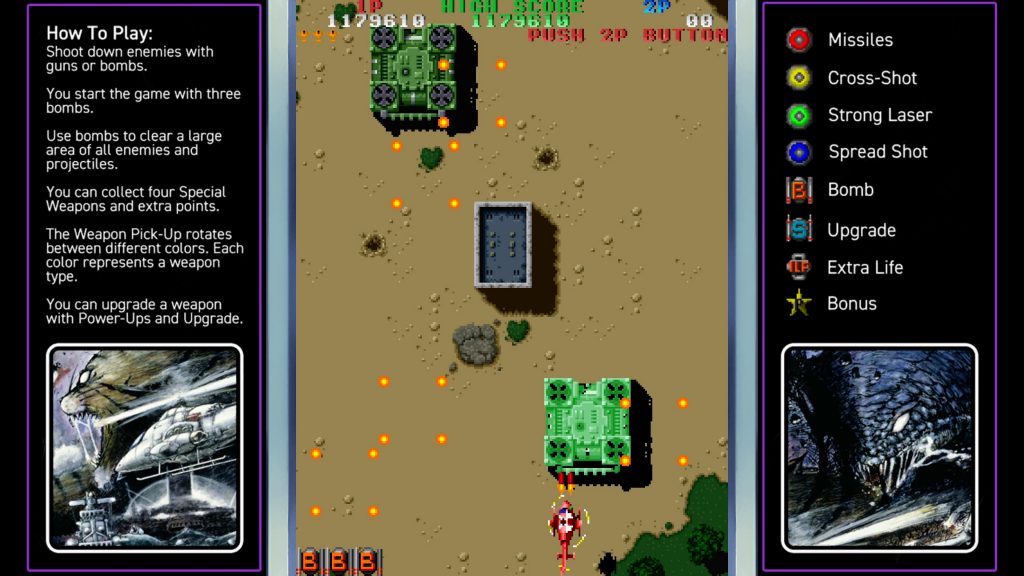
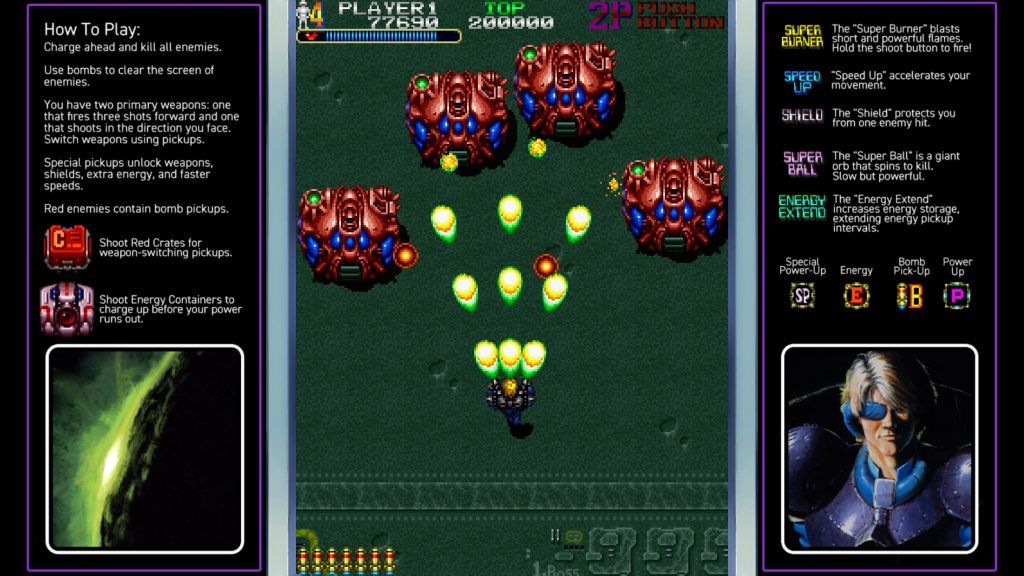
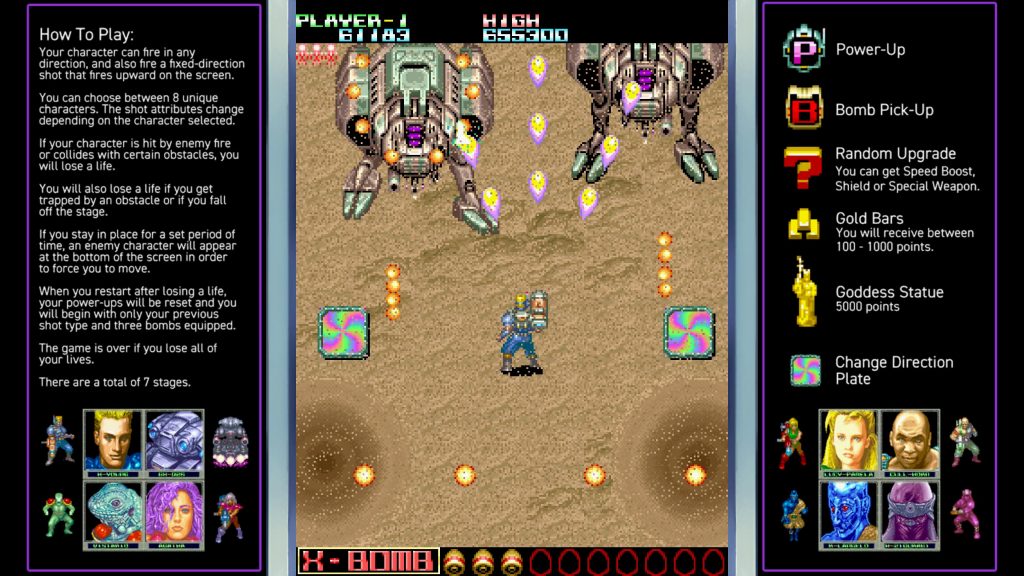
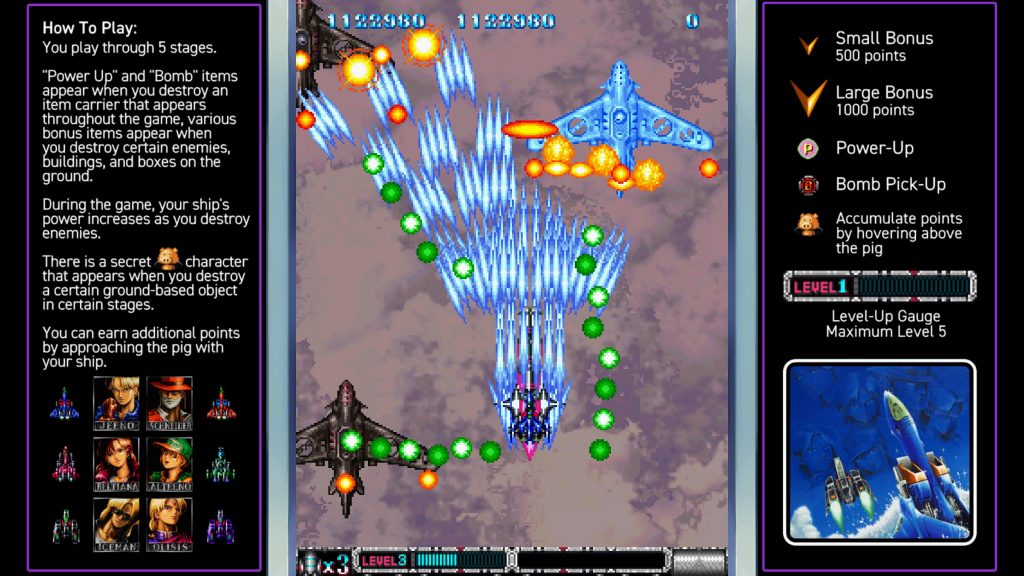
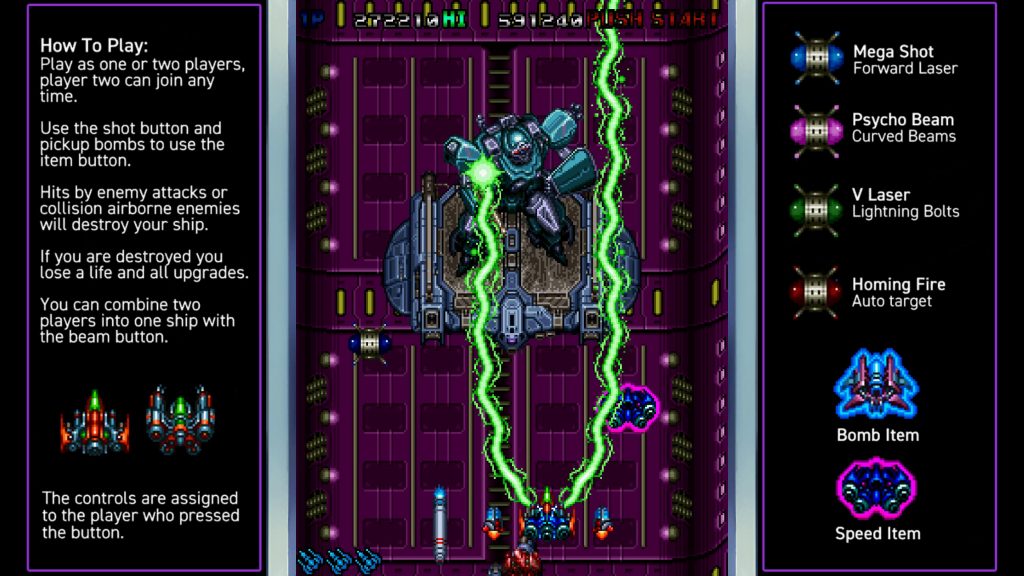
Thirty quid!? Makes the Capcom collection from PS4 a while look positively good value.